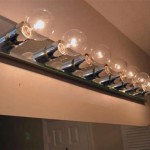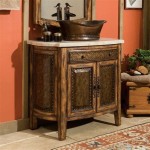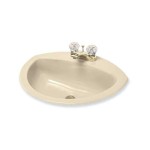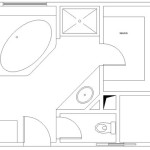How to Install Bathroom LED Downlights: A Step-by-Step Guide
Bathroom lighting plays a crucial role in both functionality and aesthetics. Upgrading to LED downlights offers energy efficiency, longevity, and a sleek, modern look. This guide provides a comprehensive walkthrough of the installation process, ensuring a safe and successful outcome.
1. Safety First: Essential Precautions
Electrical work poses inherent risks. Before commencing any installation, prioritize safety by adhering to these crucial precautions:
*Isolate the Circuit: Turn off the power to the bathroom circuit at the consumer unit (fuse box) and double-check the circuit is dead using a voltage tester.
*Use Appropriate Tools: Employ insulated tools specifically designed for electrical work.
*Consult a Professional: If uncertain about any aspect of the installation, consult a qualified electrician.
2. Planning and Preparation: Key Considerations
Careful planning ensures a smooth installation process and optimal lighting design. Consider the following factors before starting:
*Spacing and Layout: Determine the optimal placement of downlights for even illumination, considering the bathroom's size and layout.
*IP Rating: Bathrooms require lights with a suitable Ingress Protection (IP) rating to protect against moisture. Zones 0, 1, and 2 necessitate specific IP ratings. Consult building regulations for detailed requirements.
*Downlight Type: Select downlights appropriate for the ceiling type (e.g., fire-rated downlights for ceilings with fire resistance).
*Ceiling Void Access: Ensure adequate access to the ceiling void for wiring and installation.
3. Gathering the Necessary Tools and Materials
Having the right tools and materials readily available streamlines the installation process. Gather the following:
*LED Downlights: Choose downlights with the desired colour temperature, wattage, and beam angle.
*Electrical Cable: Use appropriate cable size and type for the lighting circuit.
*Connectors and Terminal Blocks: Ensure safe and secure electrical connections.
*Drill and Hole Saw: Select the correct hole saw size for the downlights.
*Screwdriver Set: For securing the downlights and wiring connections.
*Voltage Tester: Essential for verifying circuit isolation.
*Wire Strippers and Cutters:
*Safety Glasses and Gloves:
4. Marking and Cutting the Holes
Accurate marking and cutting are crucial for a professional finish:
*Mark the Positions: Using a pencil and measuring tape, mark the desired locations of the downlights on the ceiling.
*Drill Pilot Holes: Drill small pilot holes at the center of each marked location.
*Cut the Holes: Using the appropriate hole saw attachment, carefully cut the holes for the downlights. Ensure the holes are the correct size and free of debris.
5. Wiring the Downlights
Proper wiring ensures the safe and effective operation of the lighting system:
*Run the Cable: Run the electrical cable from the existing lighting circuit to the location of each downlight within the ceiling void.
*Connect the Wires: Following the manufacturer's instructions, connect the wires from the downlight to the electrical cable using appropriate connectors or terminal blocks. Ensure correct polarity.
*Secure the Connections: Double-check all wiring connections are secure and properly insulated.
6. Installing the Downlights
With the wiring complete, the downlights can be installed:
*Insert the Downlight: Carefully insert the downlight into the cut hole, ensuring it fits snugly.
*Secure the Downlight: Secure the downlight to the ceiling using the provided clips or screws, following the manufacturer's instructions.
7. Testing and Finishing
Thorough testing confirms the installation’s success:
*Restore Power: Turn the power back on at the consumer unit.
*Test the Lights: Switch on the lights to ensure they are functioning correctly.
*Final Checks: Inspect the installation for any loose wires, gaps, or other issues.
8. Building Regulations and Compliance
Adhering to building regulations is essential for safety and legality:
*Part P Compliance: In many regions, electrical work in bathrooms is subject to Part P of the building regulations. This often requires notification to the local authority or certification by a competent person scheme.
*Zoning Regulations: Ensure the chosen downlights have the appropriate IP rating for their designated zone within the bathroom.
By following these steps and prioritizing safety, one can achieve a well-lit and aesthetically pleasing bathroom with modern LED downlights.

The Best Gu10 Leds For Your Bathroom Expert Guide

How To Position Downlights Elesi Blog

Can Downlights Be Used In The Bathroom Elesi Blog

How Many Downlights In The Bathroom Elesi Blog

How To Install New Ip65 Waterproof Fire Rated Collingwood H2 Bathroom Downlights

Installing Insulation Coverable Downlights In A Bathroom Direct Lighting Advice News

Bathroom Lighting Ideas Tips Downlights Co

The Essential Guide To Bathroom Led Lighting Super Bright Leds

Bathroom Lighting Zones And Regulations Explained

Led Downlight Installation In Recessed Ceiling Installing Spotlights
Related Posts







